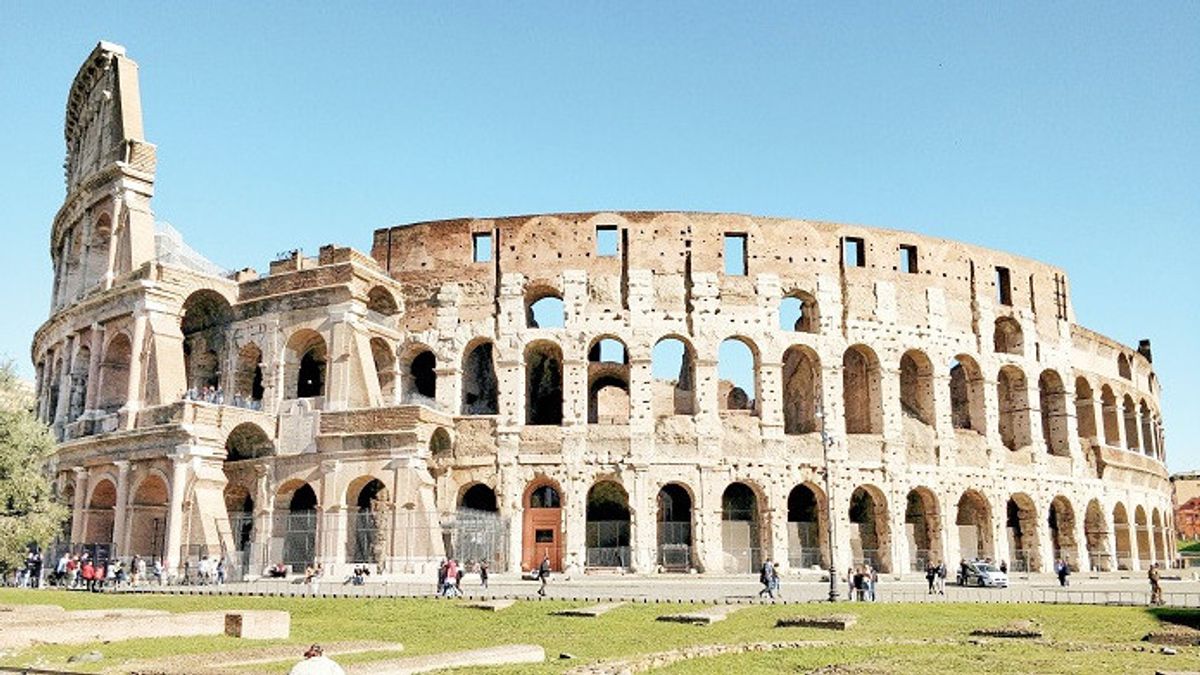JAKARTA - Historic old buildings such as the Roman Pantheon, Colosseum, and others still attract the attention of tourists around the world. But the question is, how can this building still stand firm to this day?
The question is similar to that of scientists from the United States (US), Switzerland, and Italy, how the Romans managed to build buildings with such structural integrity.
Now, they've done deep research to find out using concrete samples from Privernum, an ancient Roman city, and archaeological site.
Scientists found that lime shards could repair cracked walls and thereby extend their own life, over time.
The Romans made their concrete the same way they used to, using sand, gravel, or volcanic tuff, water, and binders.
Previously, scientists assumed that the Romans used volcanic ash as their binder. However, explanations in historic texts show ash from the Pozzuoli area was shipped throughout the Roman empire and used in various forms of construction of the historic building.
SEE ALSO:
Any white lumps found throughout the concrete are considered to be the product of poor admixtures or low-quality raw materials. However, large-area scanning electron microscopy and energy-dispersive X-ray spectroscopy (SEM-EDS) have helped scientists identify their assumptions.
Rather than indicating poor build quality, the white spots within the Roman concrete served as an independent healing mechanism for the cracks that had formed in the walls of the building.
The Romans used quicklime with or in place of the more traditional slaked lime such as lime mixed with water when they made binders. Since quicklime is more reactive, it produces an exothermic reaction which facilitates what is known as hot mixing.
Hot mixing not only reduces setting time and hardening of concrete. It also produces high temperature-related compounds which cannot be formed by slaked lime. Including the nanoparticle architecture which is responsible for the brittle and reactive source of calcium.
Any tiny cracks that begin to form in the concrete will travel through the lime shards, where they react with water to produce a calcium-saturated solution. When this solution recrystallizes, it will fill the cracks.
Scientists are trying to test the effect of Roman lime cladding on modern concrete, which actually requires more refinements and emits more carbon during manufacture than its predecessors.
In a paper published last week in Science Advances, scientists describe the process they use to combine Ordinary Portland cement (OPC) with ash, sand, and water.
SEE ALSO:
Then the scientists added quicklime to some of the samples while leaving others as they were. They cracked all the samples, ran water through the cracks, and then left them alone for two weeks.
Surprisingly, the lime-containing sample completely stopped cracking at the end of the two-week period. Water can no longer flow through the cracks. Meanwhile, samples made without quicklime were still in a cracked state and continued to let water flow through the cracks.
Now quoted from Extremetech, Thursday, January 12, scientists intend to commercialize the concrete equipped with quicklime. One method of reducing the carbon footprint of cement is to increase its longevity of concrete through the incorporation of a self-healing function.
The resulting extended service life, combined with the reduced need for extensive repairs, can reduce environmental impact and increase the economic life cycle of modern cement construction.
The English, Chinese, Japanese, Arabic, and French versions are automatically generated by the AI. So there may still be inaccuracies in translating, please always see Indonesian as our main language. (system supported by DigitalSiber.id)



















